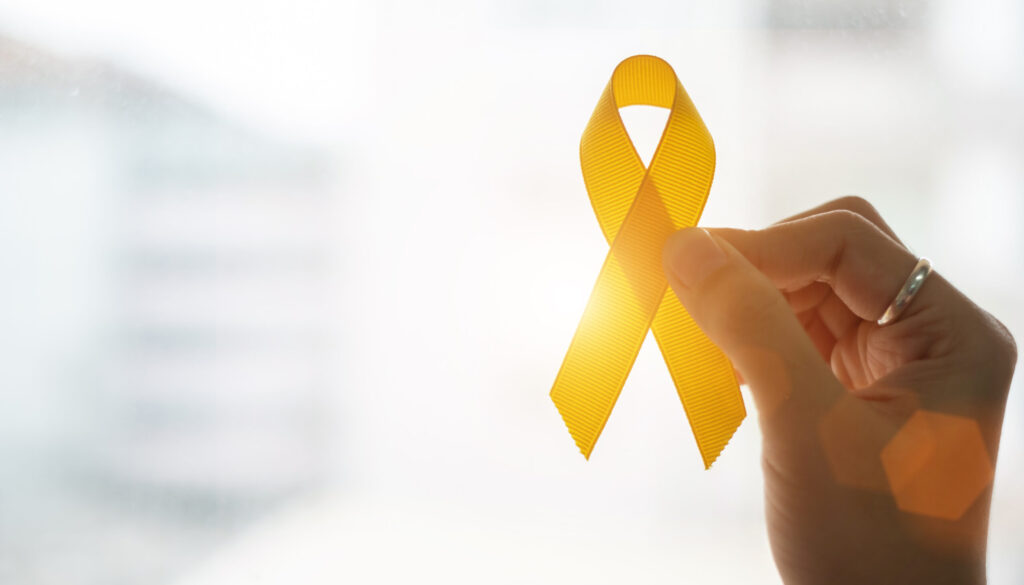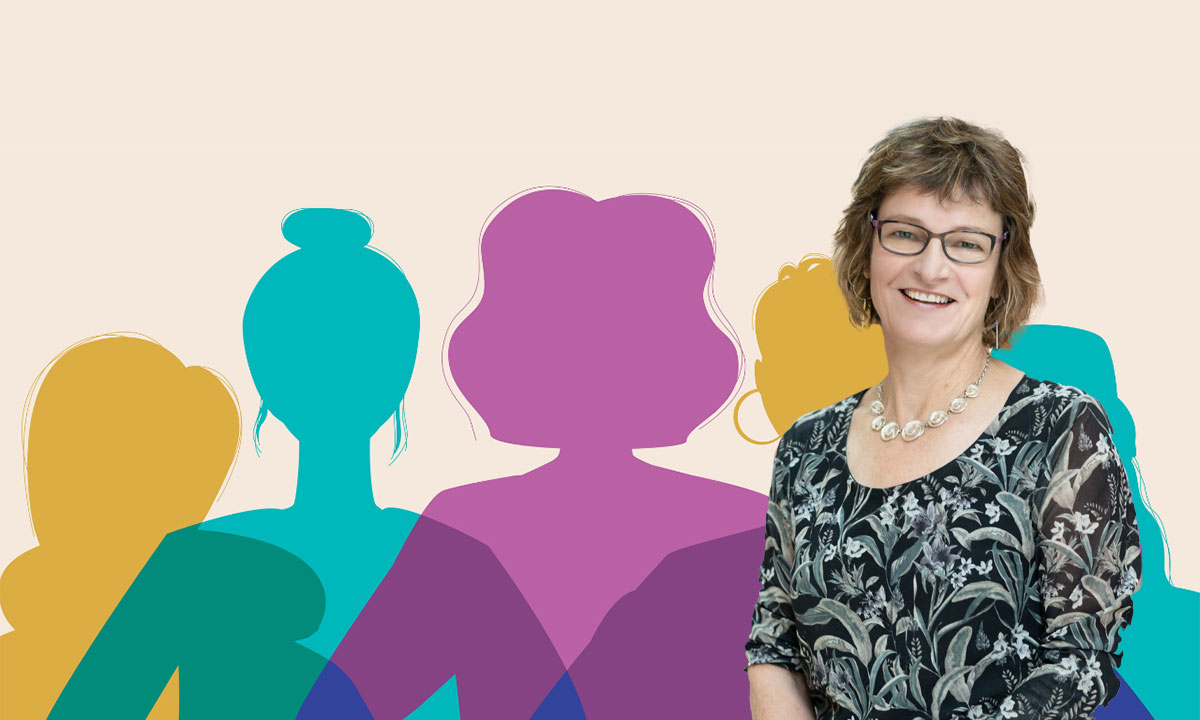International Women’s Day and the month of March promoting endometriosis awareness offer an opportunity to reflect on the sizeable effect that dysmenorrhoea, chronic pelvic pain, and endometriosis have on women’s lives, writes Professor Sonia Grover.
The role of general practitioners at the forefront of family medicine and women’s health cannot be understated.
Proactive questions regarding menstrual health need to become commonplace, starting from the onset of periods in adolescence. GPs are ideally placed to change the trajectory of women’s health.
The core clinical skills possessed by GPs, of thorough and holistic history taking, combined with empathetic validation of suffering may avert delays in the recognition of suffering, promote earlier diagnosis and better symptom management.
Active intervention early in an adolescent’s pain journey will not only lessen school or work absenteeism, or presenteeism, but also permit early intervention for mental health symptoms such as depression and anxiety. Yes, all of this takes time in the consultation.
We need to remember that dysmenorrhoea and chronic pelvic pain affects more than a million young women in Australia.
The impact of period and pelvic pain on women’s lives often begins in adolescence, with a negative impact in adolescents that is greater than that experienced by those with cystic fibrosis or juvenile arthritis.

Research has also found more than a third of adolescents reported missing school due to period pain. Even when attending classes, they may not be able to concentrate or participate fully in activities and sports, or plan for social activities, fearful that a period, with its pain and associated nausea, vomiting and diarrhoea might ruin their plans.
The challenge for both health professionals and the public is that period and pelvic pain are often complex and multifactorial, much more than simply the lesions of endometriosis.
We also need to acknowledge the complexity and uncertainties related to endometriosis and infertility. Endometriosis is variably reported as responsible for 30–50% of infertility (here and here). Excision of endometriosis likely improves the spontaneous pregnancy rate.
In contrast, the impact of excision of endometriosis (for all stages) and the success rate of assisted reproductive techniques remain debated. Thus, infertility specialists may offer a laparoscopy and look for endometriosis, only after considering factors including the woman’s age, her ovarian reserve, and desire to use or to avoid assisted reproductive techniques.
There is increasing evidence that repeated experiences of period pain predispose to up-regulation of the nervous system and the development of multiple persistent pain syndromes which commonly co-occur in people who have pelvic pain.
Unfortunately, the focus on, or desire for, a diagnosis of endometriosis in women who have period pain has drawbacks.
Making a diagnosis of endometriosis necessitates a referral to the overloaded hospital system, often with a resultant delay in the management of symptoms.
Another conundrum is that for women with identical period and pelvic pain symptoms, only half will have endometriosis lesions at laparoscopy — a procedure that carries surgical and financial risk.
In women who have endometriosis identified the surgical treatment of these lesions is not currently well supported by evidence and fails to bring effective long-lasting relief to many patients.
Furthermore, it is associated with persistent post-surgical pain in 10% of women, and recent unpublished data from the Australian New Zealand Clinical Trials Registry suggest up to 40% of women undergoing surgical treatment for pain will have ongoing pain (ANZCTR: ACTRN12616000150448). Many will undergo multiple laparoscopies for recurrent or persistent pelvic pain.
In my clinical experience, I have found a lack of correlation between endometriosis lesions and patients’ symptoms. Patients commonly present with comorbid pain syndromes such as migraine, irritable bowel syndrome, myofascial pain, and fibromyalgia.
We also know that endometriosis can be asymptomatic and that factors such as adverse childhood experiences can affect a person’s experience of pain.
The impact of the symptoms on quality of life is perhaps the most important consideration. We must treat the symptoms; we must understand the individual and not be blinkered by an attempt to treat the lesions.
In an era of overstretched health care resources, what can we do to alleviate the burden of period pain, pelvic pain, and endometriosis on young women?
Firstly, we need to recognise and acknowledge the problem. Although awareness is increasing, there is still a stigma surrounding periods and pelvic pain, especially in adolescents, and this compounds the difficulties in diagnosis and effective management.
In my clinical experience, it is not uncommon for me to see adolescents who have been undertreated for their period and pelvic pain for a mixture of reasons, including:
- normalisation of the symptoms;
- a mistaken belief that “she’ll grow out of it”;
- discomfort in discussing or prescribing contraceptives to adolescents; and
- a lack of appreciation for the complexities and comorbid conditions experienced, especially the impact on mental health.
Simple measures such as the use of continuous combined oral contraceptive pills and non-steroidal anti-inflammatory drugs are effective for 90% of adolescents with dysmenorrhoea.
Of importance, in a ten-year follow-up of a group of women managed with this approach, minimal or mild endometriosis was identified in fewer than 20% of women. However, these simple measures are often underused.
In the Murdoch Children’s Research Institute’s Longitudinal Study of Teens with Endometriosis, Period and Pelvic Pain (LongSTEPPP) Co-design study, a survey of over 1800 adolescents, 40% of participants had seen their GP for their period pain and many had attended a hospital emergency department. Yet, only half used over-the-counter medications for their pain, despite significant pain.
During this month of March, and beyond, we should all be advocating for opportunities and resourcing for women’s health to change the trajectory of often silent suffering and to ensure adolescents, who are at a key developmental stage of their life, are afforded the opportunity to avoid some of these long term problems such as chronic pelvic pain, endometriosis and infertility.
We need to respect what we do and do not know about chronic pelvic pain and endometriosis.
How many adolescents have “inherited” their period and pelvic pain problems from their mothers?
How many have experienced adverse childhood events and how does this influence pain?
What are the health utilisation costs of managing period pain and endometriosis – both when the management is successful and when it fails?
The Longitudinal Study of Teens with Endometriosis, Period and Pelvic Pain
The Longitudinal Study of Teens with Endometriosis, Period and Pelvic Pain, which has received $1 963 118 in funding through the Australian Government’s Medical Research Future Fund, is trying to answer these questions.
LongSTEPPP is enrolling young people aged ten to 18 years who have been referred to a gynaecologist for dysmenorrhea to follow their longer term outcomes, in-particular regarding pain, mental health, and health care utilisation.
For more information on the study or to refer a patient to the study, please see: https://www.mcri.edu.au/research/projects/longsteppp
Professor Sonia Grover is a gynaecologist and a pain medicine specialist at the Royal Children’s Hospital and Mercy Hospital for Women, and a Research Fellow at the Murdoch Children’s Research Institute.
The statements or opinions expressed in this article reflect the views of the authors and do not necessarily represent the official policy of the AMA, the MJA or InSight+ unless so stated.
Subscribe to the free InSight+ weekly newsletter here. It is available to all readers, not just registered medical practitioners.
If you would like to submit an article for consideration, send a Word version to mjainsight-editor@ampco.com.au.

 more_vert
more_vert
Please don’t think GPs can’t be effective in helping teenagers with period pain – I suffered from the age of 13 years with severe pain, only to be told by a male GP to “get out and do some gardening” as his solution. My mother, understandably, thought it best to insist I go to school on that first day each month, even though I invariably had to make my way home (on foot) after a few hours as I was in so much pain. Nobody suggested even a panadol, and it wasn’t until a new (male) GP suggested NSAIDs when I was 18 that I got some partial relief, and even more so when I went on the pill. It wasn’t until I was 32 yrs old that I was diagnosed with severe endometriosis, with so many adhesions that infertility was the result. Out of all that, one of the hardest thing to bear was being dismissed by that first GP as if I was just a neurotic female. There is a LOT the GP can do even if the wait for the Laparoscopy is long!
I have just retired from 54 years of private O&G practice and remain disappointed how endometriosis is frequently managed in Australia today, particularly the emphasis on surgery. Having followed up vast numbers of these women often virtually from puberty to menopause I can say that severe endometriosis is totally preventable medically and should not occur. I have also been disappointed by the decline in use of DMPA (Depo Provera/Ralovera) which I have used since its introduction in 1972 and have seen it clear up endometriosis more effectively and safely than other treatments.
It does feel like GP’s are getting thrown under a bus here. It feels inevitable we are going to be the “GP’s who don’t care.” You cant diagnose Endo without a laparoscope, and treatments are pretty poor. ( unless things have changed)
So no matter how much we listen , we are now overwhelmed by so many patients, looking for dysmenorrhea relief:
Our response : effectively, it’s referr for a laparoscope( unlikely to be able to get) , the COC ( thats interventional! ) or NSAIDs ( is that it : really Doc?) This feels like bad public health screening when you throw the net. out to women with painful periods : I know its about awareness, but effectively thats what we are asked to do. And in adolescents! .Screen dysmenorrhea and chronic pain for Endo! .“Jjust ask your GP! ” has once again been weaponized , without any way to diagnose or cope with the response , leaving GP’s once again under resourced and maligned, because patients feel we are doing nothing,
Every media. story starts with “ My first GP’s didn’t understand” Please use the research money wisely and I would suggest : Come back to the public with a wholistic , screening model or Can we not agree on a set of clinical criterion and use that as a diagnostician tool , like PCO At least then we have a diagnosis. Please not another expensive medication for a tiny percentage of sufferers. Can I respectively suggest : If you want to work with GP’s , please try to change the narrative.